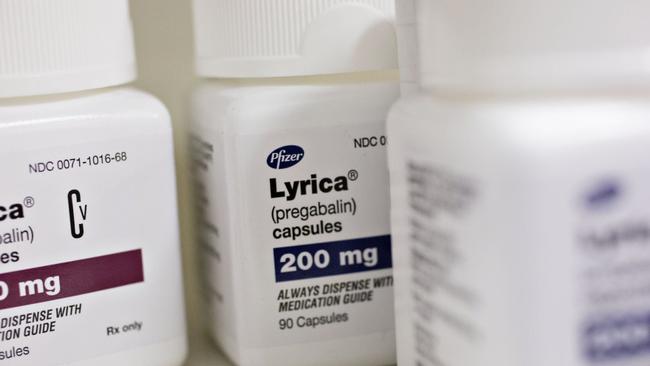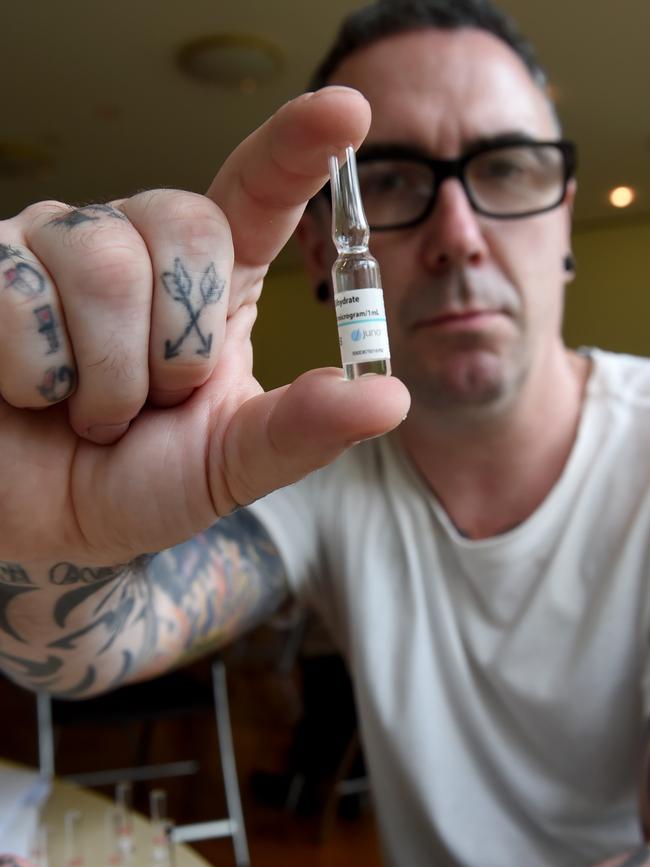Lyrica and opioid abuse Australia: Prescription drug deaths on rise
Australians continue to play with fire when it comes to mixing prescription drugs, and with powerful medicines like Lyrica now in the mix, the risk of death has led experts to urge users to keep anti-overdose drugs on hand to save a loved one’s life.
- Police, sniffer dogs ‘contributed’ to festival deaths inquest told
- Taxpayers forking out thousands for politicians bingles
Opioid-related drug deaths remain so high in Australia, experts are urging people using the strong medicines to keep an over-the-counter drug called Naloxone at home in the case of an overdose.
The latest figures of drug-induced deaths paint an alarming picture of prescription opioid use in Australia, with middle aged men and women accounting for the highest rate of fatalities.
Of the 1795 drug-induced deaths in 2017, opioids were the main drug cited (1171), with 63 per cent attributed to pharmaceutical opioids, according to National Drug and Alcohol Research Centre’s report released this week.
The report, which includes estimates of drug-induced deaths in Australia from 1997 to 2017, found the majority of deaths were accidental.
The highest rate of fatalities in 2017 were among females aged 45-54 and males 35-44, mostly as a result of pharmaceutical opioids and other sedatives including benzodiazepines, antipsychotics and the non-opioid medicine pregabalin, used to treat pain.

More news
Tortured dad of MDMA drug victim: ‘I wish I could bring him back’
Nanny paid just $2.33 an hour to work 106-hour week
Dr Jennifer Stevens, a specialist in anaesthesia and pain medication at St Vincent’s Hospital in Sydney said the traditional illicit drug user was no longer the highest risk group.
“For women it’s the 45 to 55-year-old age group who are most at risk and that’s why prescription medication is particularly problematic,” Dr Stevens said.
“This group of women are being prescribed large amounts of medication because that’s the kind of age you start to get a bit of painful wear and tear.
“It starts with a bit of chronic pain, and it’s that group of patients who end up piling one drug on top of another because the first one, the second one aren’t working as well.”
Mixing such drugs including with alcohol increases the risk of respiratory depression and death but many people were not aware of the dangers, she said.
The co-use of opioid medicines with sedative substances like pregabalin, an anticonvulsant used to treat nerve pain and general anxiety disorder, is of increasing concern.

Deaths related to pregabalin have increased fivefold from less than 20 before 2015 to 100 deaths in 2017, leading to concern among experts it’s will be the new prescription drug crisis.
Known for its ‘euphoric effect’ when mixed with other drugs, misuse and a black market for the drug continues to grow.
The sixth most prescribed subsidised medicine in Australia in 2017, more than four million scripts were written for pregabalin, sold by Pfizer as Lyrica, in 2017-18.
Last year, Victoria reported a tenfold increase in ambulance call outs involving pregabalin since 2012. The drug has been linked to increased suicidal behaviour.
“When people are dying and they’ve got that drug in their bloodstream, it’s not the only drug — it tends to be a drug they’re mixing with alcohol or opioids or benzodiazepines and it makes those other drugs more dangerous,” Dr Stevens said.

MORE BY GILLIAN MCNALLY
What happens when ordinary people take on homelessness
Inside the secret Sydney body farm where death brings its own purpose
Dr Amy Peacock, Program Lead for Drug Trends at NDARC, said the number of deaths relating to pregabalin were likely to be higher as it had not always been included in routine toxicological screening at death.
“It’s disappointing we continue to see this high number of drug-induced deaths, many of them are accidental, and we know many of them are preventable as well,” Dr Peacock said.
“We know about the risks of mixing opioids with other drugs, including other sedative medicines such as pregabalin, benzodiazepines, and antipsychotics,” she said.
“We need to ensure that people who are at risk of overdose — and their friends and families — have access to naloxone, a drug available over-the-counter in pharmacies that can be used to reverse opioid overdose.”
The total number of drug-induced deaths in 2017 is slightly down on last year’s record 1808 figure — the highest since the 1999 peak of the heroin epidemic (1740) — although per capita, it is slightly less due to population changes.

Of the 1795 drug-induced deaths, 93 were attributed to amphetamine including MDMA and methamphetamine and fewer than 20 were cocaine-induced.
Dr Stevens urged people using strong opioid medications to keep naloxone on hand, and for friends and family members to know how to administer it in the event of an overdose.

“We’re very much encouraging naloxone for people particularly on high dose opioids or on a number of different drugs that include opioids,” Dr Stevens said.
“Even if you take three or four sedative drugs and opioids are one of those drugs, if you have naloxone in your house, chances are you’ll be able to wake up and be safe.”
Naloxone hydrochloride, sold as Nyxoid, can temporarily reverse opioid overdose. It can be injected intramuscularly or via intranasal spray. Speak to your GP or pharmacist about training and administering the drug.
Key findings in the Trends in Drug-Induced Deaths in Australia, 1997-2017, includes:
● 1795 drug-induced deaths among Australians in 2017, similar to the peak in deaths observed in the late 1990s.
● 72 per cent of deaths were considered accidental
● There has been a shift over time to higher rates of drug-induced deaths in older age groups among both males and females.
● Highest rate of drug-induced deaths among females was in 45-54 age group and among males in the 35-44 age group.
● Opioids were the main drug cited in drug-induced deaths
● There were increasing rates of deaths involving other drugs including psychotropic medicines (e.g., benzodiazepines, antipsychotics) and non-opioid medicines used for treatment of certain pain conditions (e.g., pregabalin) are of concern.
● Natural and semisynthetic opioids such as morphine and oxycodone were the most commonly cited opioids in drug-induced deaths throughout monitoring.
* The data for 2016 and 2017 are not final.


